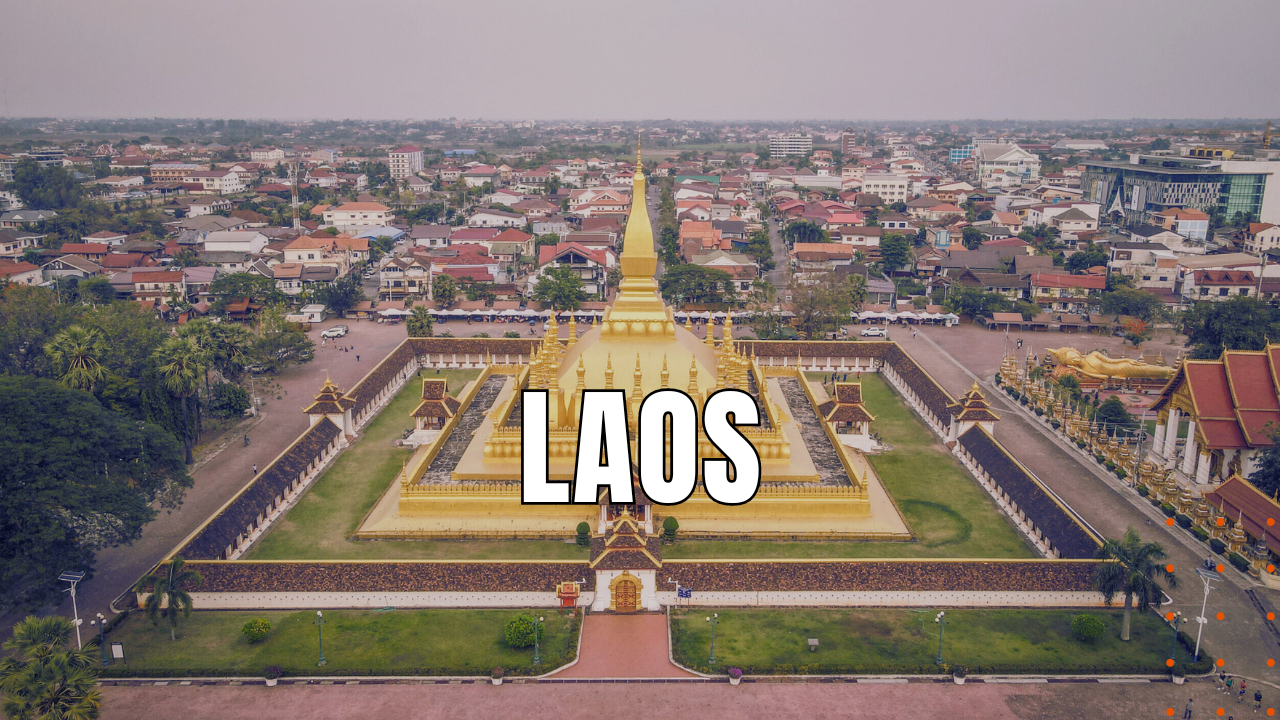Where in the World is Laos

The Lao People’s Democratic Republic lies in the center of the Southeast Asian Peninsula, sharing a 3,158-mile border with China to the north, Vietnam to the east, Cambodia to the south, Thailand to the west and Myanmar to the northwest. While almost 68% of the nation’s 91,428 Square Mile land area is covered by dense forests and jungles, Laos is also blessed with the Mekong River, which headwaters in Tibet and flows over 2,600 miles to its mouth in far southern Vietnam. Considered one of the world’s greatest rivers, the Mekong forms the country’s western border for the greater part of its length and is the cradle of ancient Lao culture, as well as the nation’s largest population centers along the banks of the river.
Three Regions
Of Laos’ seventeen provinces or khoueng, the nation is grouped geographically into three strata, including North, Central and Southern. Bordering China, Vietnam and Thailand, the North is characterized by rugged mountains, dense forests and a melting pot of diverse ethnic groups, which has long shared cultural and political interactions with her neighboring countries. Rich in cultural traditions as well as the influences from multiple ethnic groups, the Central region is home to spectacular national attractions, including the limestone karst formations and the greater than four-mile-long Konglor Cave, as well as the nation’s highest peak at Phu Bia, rising some 9,249 feet above sea level, and Laos’ largest city Vientiane, with a population just shy of 950,000 people. Bordering Thailand, Vietnam and Cambodia, the Southern region is known for its diverse topography of mountains, plateaus, plains, rivers and waterfalls.
Demographics
Known for its tropical monsoonal climate, Laos’ population of nearly eight million people is made up of a number of major and minor ethnic groups, including Lao, Khmou, Hmong, Phouthay, Mekong and Katong, and while the official language is Lao, many Laotians are also fluent in French and English. With almost 55% of the nation’s population under the age of 25, Buddhism is the most widely practiced religion in the country, although 31.4% of surveyed Laotians profess little to no attachment to any religion at all. Ranked 30th out of 39 countries in the Asia-Pacific region, Laos boasts an annual GDP of $15.47 billion, thanks to the nation’s main industries such as agriculture, forestry, mining and hydropower, while the country’s leading exports include wood products, coffee, electricity, tin, copper and gold, making Laos, a breathtaking centerpiece in the heart of Southeast Asia.
